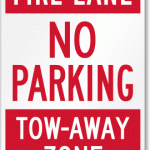VMTs on decline since ’92, with men driving most by far
Call it the great American car devolution: Americans have been driving less since at least 2004 — if not earlier, according to a recent report by the Washington Post. While VMTs, or vehicle miles traveled, peaked 11 years ago, individual states’ VMTs peaked as far back as 1992. And among the drivers who are clocking those VMTs, another trend is emerging: Men are driving more than women, reports Treehugger — 63% more, to be precise.

More detailed data on driving habits indicates that some states peaked well before others – suggesting a durable trend, rather than just a response to the 2007 crash. Image from sjrankin.
First, let’s take a look at why Americans have been driving less on the whole. As the Post reported, car travel in the country seems to have peaked in 2004, with miles traveled since then “falling or flat-lining,” raising the question of whether the change represents “some fundamental shift in the American relationship to the car, or some economic blip instead.”
One suggested answer to the question comes from Timothy J. Garceau, a Ph.D. candidate at the University of Connecticut, and professors Carol Atkinson-Palombo and Norman Garrick, who have researched miles traveled on a state-by-state basis, instead of nationally. Their findings: the VMT decline started in individual states for years before it was perceptible at the national level. For example: car travel peaked in Washington state in 1992, and in Washington D.C. in 1996, and in Nevada, Idaho, Kentucky, Oregon, Rhode Island and Virginia all prior to 2000.
In fact, miles traveled per capita peaked in 48 of 50 states (Alabama and North Dakota were the exceptions) by 2011. Interestingly, the researchers found that — according to data on some of the states which peaked earliest — traveling by car can decline even while the economy is growing. Through the 2000s, the Post points out, 30 states no longer demonstrated a notable relationship between miles traveled and GDP: “One potential explanation is that our economy is increasingly powered by sectors, like tech, that rely less on transportation. Or maybe we’re interested in spending our wealth in different ways today.”
In other car-related news, U.S. Department of Transportation data reveals that men in the U.S. are driving over 60% more than women, on a yearly average, with the highest driving rates among men age 35 to 54 (nearly 16,000 miles). Women in that same age range rack up about 11,500 miles, while women who drive the most, according to the data, are aged 20 to 34. (See the handy chart here.) On average, men from all age groups drove 16,550 miles annually, while women drove 10,142 miles. Vehicles in the U.S. have traveled 2,988,777,000,000 miles over the last 12 months, according to the October 2014 data.
Men (and women!) who are angling to lower their own VMTs for any number of reasons have a variety of obvious options: public transit, biking, walking, carpooling, and ridesharing or carsharing are all alternatives that are easy on the wallet… and on the environment. Still car-reliant? Check out these helpful suggestions on maximizing fuel economy for your vehicle.
Related Posts
Category: Miscellaneous, Transportation

















